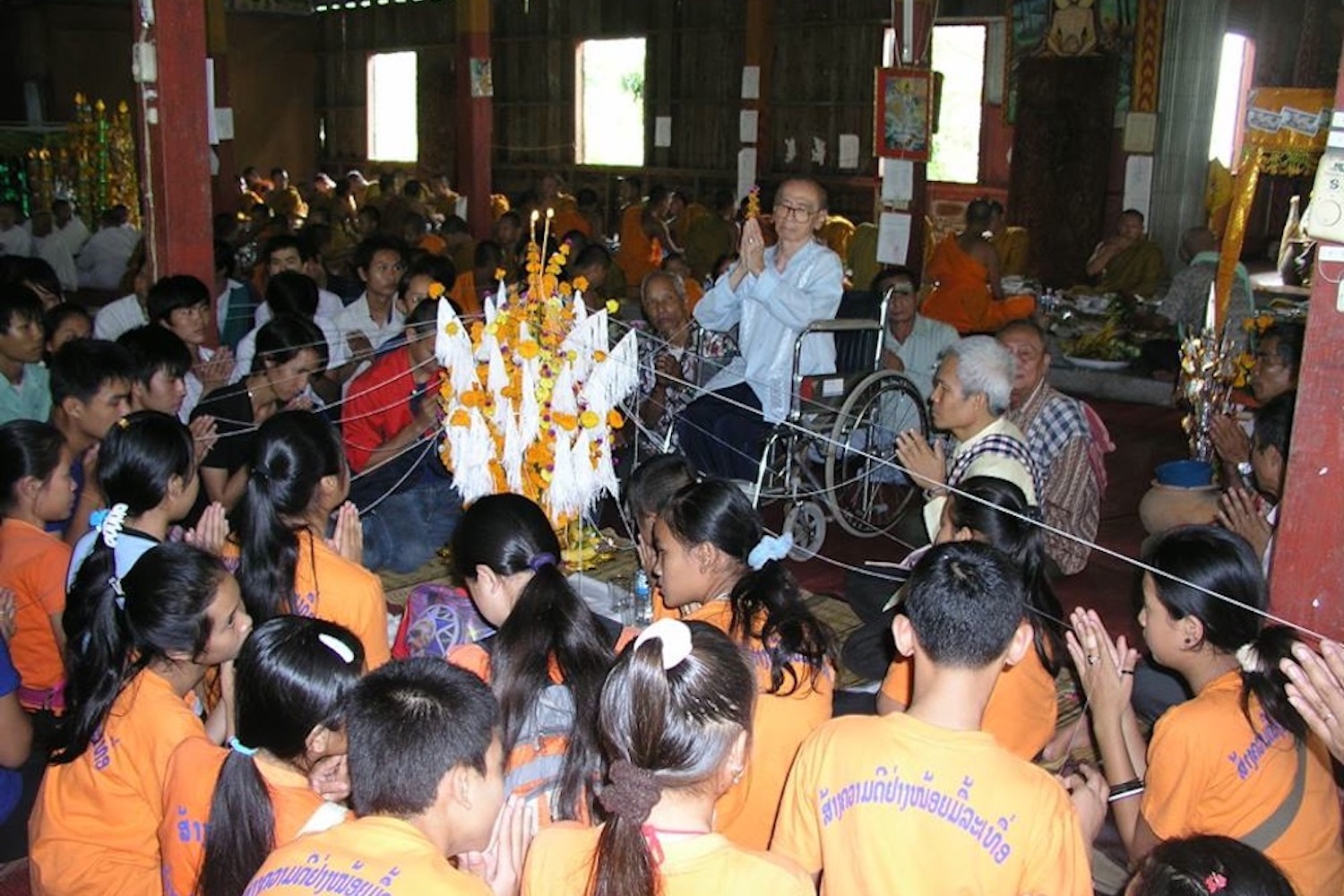The Straits Times: 23 January 2022
Nirmal Ghosh Non-Fiction
Silencing of A Laotian Son: The Life, Work and Enforced Disappearance of Sombath Somphone
By Ng Shui Meng

International Network of Engaged Buddhists/Paperback/292 pages/ US$10 (S$13.50) before delivery costs/ Buy at inebnetwork.org/book-shop
The image on the cover is the last-known one of the man, a grainy screen grab from a closed-circuit television camera from the evening of Dec 15, 2012, in front of a police post in Vientiane, Laos. Community development worker Sombath Somphone, who would be 70 this February, has not been seen since. Even his Jeep has not been found.
His Singaporean wife Ng Shui Meng, who moved to Laos to be with him in 1986, covers more than half a century in the book, which is written in a simple, straightforward and gentle manner.
Like thesoft-spoken Sombath himself, it has no unnecessary flourishes.
The story of Sombath, who was from a traditional subsistence farming family, is a window into Laos – astill relatively opaque country traumatised by war, only superficially understood by those outside it.
It rarely figures in the global media, yet is part of the shared fabric of mainland South-east Asia stitched together by the waters of the mighty Mekong River.
For Sombath, growing up in his ancestral village, “there was only the land, the river, and the spirits that people believed inhabited every tree, every rock, and every nook and corner. Keeping the spirits happy, or at the very least avoiding offending them, was just as important as making merit at the temple. Buddhism and animism existed in harmony”.
Life was not easy. As the eldest child, his responsibilities included fetching water from the Mekong inbuckets balanced on a bamboo pole across his shoulders. But that upbringing instilled in him a respect for indigenous knowledge.
After studying in the United States, he returned to the land of his birth. His community and youth development work earned him widespread recognition as Laos’ leading development specialist. In 2005, he was given the prestigious Ramon Magsaysay Award for Community Leadership. That makes his enforced disappearance all the more inexplicable.
Lao authorities have maintained that Sombath was kidnapped “perhaps because of a personal conflict or a conflict in business or some other reasons” and that no agent of the state was involved.
But those who know him suspect his disappearance was linked to his coordinating role in the ninth Asia-Europe People’s Forum, a biennial meeting between European and Asian non-government organisations (NGOs), in Vientiane in October 2012. It was the largest civil society event held in Laos.
Government security agents were present throughout, intervening in discussions, taking pictures of participants and keeping a close eye on the materials provided. One Laotian woman was harangued and reduced to tears.
Soon after the forum, aid worker Anne-Sophie Gindroz, who had worked in Laos with Swiss NGO Helvetas, was abruptly expelled.
A week later, Sombath disappeared. Though his wife appealed to high levels of the government and the ruling Communist Party, she met dead ends everywhere.
“I finally realised that Sombath’s abduction was not because he had done anything wrong,” she writes. Rather, it was a “deliberate and cynical political act” timed to serve as a warning to the people of Laos.
“If someone as well-known and respected as Sombath could be ‘disappeared’, then anyone could suffer a similar fate.”
The book is dedicated to all victims of enforced disappearance. The United Nations Working Group on Enforced or Involuntary Disappearances has documented at least 1,301 cases that remain unresolved in South-east Asia.
There is something evil about enforced disappearance. It leaves no closure. There is none of the implacable finality of death, only a dreadful, prolonged uncertainty.
“For a long time, I was not emotionally and psychologically prepared to write about Sombath, his work, our lives together or about the abominable crime that has so decimated our lives. It was quite simply too painful,” writes Ng.
“I was also stopped by a fear that if I did write about him, it would actually become a memorial and a painful acknowledgement that he might never come back or worse, that he might no longer be alive.”
She refers to her husband in the present tense throughout. “Unless and until I know otherwise, I will regard him as alive and expect that he will one day come home.”

